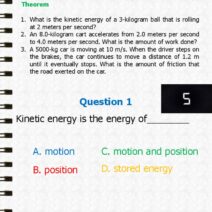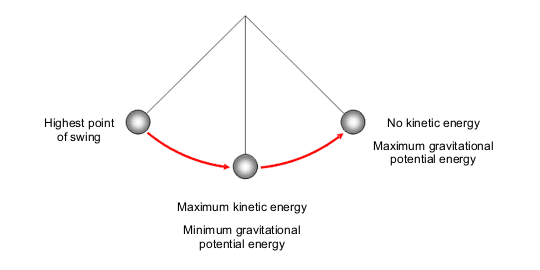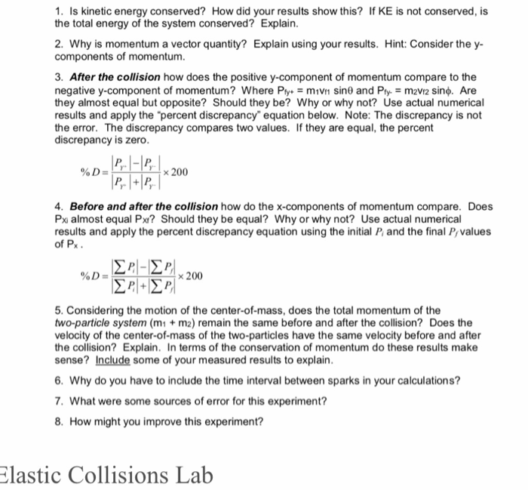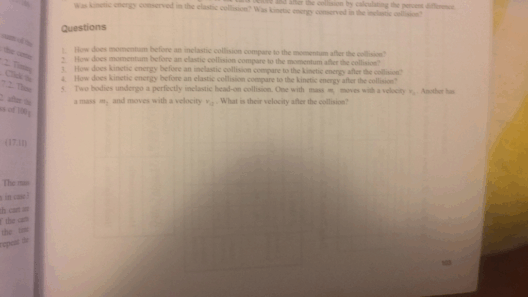Have you ever wondered how a carefree child on a playground swings higher and higher, defying gravity? What if I told you that there’s a mathematical framework that elucidates this captivating phenomenon? The concept of kinetic energy, when explored through the lens of conservation principles, takes us on an intriguing journey into the dynamics of motion. So, how precisely can one calculate the conservation of kinetic energy with remarkable proficiency?
Let’s embark on this exploratory odyssey by first distilling what kinetic energy represents. Kinetic energy (KE) is the energy possessed by an object in motion. Defined mathematically, it is expressed through the formula:
KE = 1/2 mv²
In this equation, ‘m’ denotes the mass of the object, while ‘v’ signifies its velocity. This formula implies that kinetic energy is directly proportional to the mass and the square of the velocity. Hence, even a modest increase in speed results in a considerably amplified kinetic energy. However, grasping this concept is merely the starting point; the true challenge lies in understanding how kinetic energy remains conserved in isolated systems.
Conservation of kinetic energy occurs in elastic collisions—those occasions when two objects collide without any loss of kinetic energy. Picture a perfectly elastic system: when two billiard balls collide, they exchange energy but the total kinetic energy remains the same. But here’s a playful challenge: can you think of a real-world example where kinetic energy is conserved? Perhaps you’ll find that even the simplest of encounters—like a football being kicked—embodies this principle.
To calculate the conservation of kinetic energy in a situation involving two colliding objects, we use the following approach:
- First, determine the initial kinetic energies of both objects before the collision.
- Next, apply the conservation of momentum, which states that the total momentum before the collision equals the total momentum after.
- Finally, ascertain the final kinetic energies of the objects post-collision.
Let’s break this down using an exemplary scenario: imagine two ice skaters, Skater A and Skater B, approaching each other on a frictionless surface. Skater A has a mass of 50 kg and is gliding at a velocity of 3 m/s, while Skater B, weighing 70 kg, is moving towards Skater A at a speed of 2 m/s.
First, we calculate the initial kinetic energies:
- KEA = 1/2 (50 kg) (3 m/s)² = 225 Joules
- KEB = 1/2 (70 kg) (2 m/s)² = 140 Joules
Now, we ascertain the total initial kinetic energy:
Total KE (initial) = KEA + KEB = 225 J + 140 J = 365 Joules
Next, we move on to analyze the momentum before the collision. The total momentum (P) is calculated using the formula:
P = mv
Before the collision:
- PA = (50 kg)(3 m/s) = 150 kg·m/s
- PB = (70 kg)(-2 m/s) = -140 kg·m/s (negative due to direction)
Now, we compute the total momentum before the collision:
Total P (initial) = PA + PB = 150 kg·m/s – 140 kg·m/s = 10 kg·m/s
Let’s presume these skaters collide elastically. According to conservation laws, we then consider their post-collision velocities. Let’s say they move away from each other, with Skater A moving to the right and Skater B to the left. If we denote their final velocities as vA and vB, the conservation of momentum stipulates:
vA + vB = 10 kg·m/s
Additionally, utilizing the conservation of kinetic energy, we set up the equation:
KEA + KEB = 365 Joules
From here, we can find the final velocities of the skaters post-collision. Ensure you manipulate these equations meticulously; they can often present intellectual challenges that require careful consideration.
Intriguingly, the conservation of kinetic energy isn’t merely a theoretical construct confined to physics textbooks. It elegantly intersects with numerous real-life applications, from engineering to sports and transportation. Understanding how energy transfers and transforms can empower us to innovate solutions towards sustainable practices, ultimately forging a more harmonious relationship with our environment.
As we venture deeper into the intricacies of kinetic energy, embracing its conservation may inspire creative approaches to energy efficiency and utilization. After all, every playful swing or exhilarating ride encapsulates cozy whispers of energy conservation at work, reminding us of the interconnectedness of energy forms. Embrace the journey of mastering these calculations, and ponder how this fundamental understanding can be harnessed to inspire impactful change.
As you ponder kinetic energy, consider its broader implications. For instance, how can conserving kinetic energy influence sustainable transport systems? Are there ways to implement these calculations into energy-efficient technologies? The ripple effects could lead to greater environmental consciousness, serving as a call to action for responsible resource management this planet so desperately needs.








